A Decade of Slow Growth: Why the United States will Face a Decade of Economic Stagnation and Face a L Shaped Recession. 10 Charts and Pictures as to Why This will Occur.
Given the recent positive reading for GDP, some are now doubting that we will even face a recession. This of course is a misnomer and most average Americans realize that our country finds itself in a very tenuous situation. It is very easy to brush off the current talk of economic malaise as simply another business cycle unwinding yet this time there are many fundamental circumstances that simply make this situation a very unique beast.
As baby boomers reach retirement age it could not have happened at a worse time. The economy is on the brink of recession and we are going to face the largest entitlement program drain on our system ever. Social Security was never devised as a retirement or pension program but a large portion of our elderly depend on this income. There is a baby-boomer age-wave theory proposed by economist Harry Dent that views a peak in the US stock market at 2007 and 2009. His prediction is based on observations that consumer spending peaks at or near age 50. With many boomers starting to retire in the upcoming years the age-wave theory predicts a slow down in the economy.
Generally speaking there are 76 million people that were born between 1946 and 1964. With that said, 2011 will be the first year that the first baby boomers will hit the 65 year age mark and the beginning of a long-term trend that will become more reliant on entitlement programs. This is happening just as the largest United States housing bubble is popping. With residential housing prices peaking at nearly $24 trillion only to see about $5 trillion of that disappear in a few short years, the economy is facing constraints at the worst possible times. We are also seeing consumer inflation pick up in gas, groceries, and healthcare at a time when many boomers are going to be stuck on a fixed income. While prices go up, their monthly payment is fixed.
In this article, we are going to examine 10 very crucial areas in our economy that practically guarantee that for the next decade, we are going to see slow to negative growth in our economy. We’ll examine housing, entitlement programs, and income to try to arrive at a forecast for the next decade.
Factor 1 – New Homes Sold
Examine the above chart for a minute. Never in our nation’s history have we seen such an epic boom in new homes being sold. For the past decade, much of our economic prosperity was intertwined with the fate of housing. In fact, there have been recent estimates that housing related industries accounted for 30 to 40 percent of job growth since 2000.The peak was reached in the second half of 2005. At this time homes were flying off of the shelves like the latest hit album and financing was ample to fuel this flame. Keep in mind the above chart is for new homes. Thus we can assume that builders were keen to this information and started an epic housing construction boom to meet this new home demand. Much of the creative financing including the $500 billion in currently outstanding option ARM mortgages helped fuel this run up.
This pace was simply unrealistic since the growth in population was not keeping up. In fact, demographic trends would have pointed to an otherwise conclusion. That is, many baby boomers now with empty nests would be selling their homes and downsizing and organically there would be a natural jump in housing inventory on the market. Instead, we had a decade long boom in new home construction that will now contend with the onslaught of baby boomer homes that will hit the market in the next decade.
Factor 2 – New Housing Units Started
Given the above, builders were quick to catch onto this once in a lifetime trend. Yet what you’ll notice is that new home sales peaked in the second half of 2005 while new housing starts peaked in the summer of 2006. This lag of course was many builders came late to the game and over estimated the actual demand in the market. What they failed to grasp was much if not most of the market was a Ponzi scheme based on pure speculation.  This was similar to 1920s Florida real estate except this engulfed numerous metropolitan areas across the nation. States like California, Florida, Nevada, and Arizona are feeling the brunt of this correction.
The new housing starts and new homes that have been built assure us that we will have plenty of housing for the next decade. Even though many are now pointing to the decline in housing construction as a sign that we will move inventory off the market in the next few years, they fail to examine the baby-boomer age-wave theory and fail to realize that many boomers will be selling their homes in the upcoming years which will once again push inventory up.
The birth rate has also massively declined since the time of the baby boomers. Take a look at the below chart:
*Source:Â Profutures.com
So the trend is unmistakably for smaller families which of course means that many people do not need bigger places which is ironic given the average size of a home has increased over this time not for necessity, but for other reasons.
Factor 3 – Construction Spending
It would logically follow that construction spending has now declined as well. Construction spending peaked with new housing starts in 2006. Since then, it has been steadily declining. Given the nature of construction, much of the unemployment in this industry has hurt many other areas. These are generally high paying jobs but also include much of the shadow economy of employment. Recent data on remittances to Latin America show a major decrease in money being sent back home that nearly parallels the peak in construction spending and contraction. In addition, trucks are a big part of the industry. Construction bodes well for this industry but it has been hit with a one-two punch. First, the industry has contracted but then high fuel costs have also hurt the recreational truck buyer. That is, those that buy not because they need a truck but because they want a truck.
Construction employs a large number of people and this pull back is only going to fuel even higher unemployment which we are already seeing. The idea being postulated that we’ll see this pick up soon is somewhat unfounded. Just as we start clearing the current glut of new housing, which is 2 to 4 years away, we should be seeing a natural organic selling of baby boomer homes. Not to be macabre but James Love of BoomerDeathCounter.com states that a Baby Boomer will die every 49.5 seconds in the USA during the year 2008. This number will increase simply because of aging and the natural life process and this will add more inventory to the overall housing market. In this same vein, most boomers will also start relying much heavier on an already over burdened healthcare system.
These reasons practically ensure that we will see a decade long contraction in construction as it pertains to residential housing.
Factor 4 – Household Debt and Liabilities
It is hard to believe that there is nearly $14 trillion in household debt in the United States. This trumps our nationwide GDP. As I discussed in a previous article as to why the United States will not see a second half recovery, this amount of debt is putting a pinch on the bottom line of many households. A large amount of this debt, approximately $11 trillion is mortgage debt. As the price of housing continues to fall, the amount of debt does not move. That is the challenge that we are facing. Much of the foreclosures that we are seeing are a vicious way economically speaking of reconciling the balance sheet of America. That is, lenders are not going to willfully modify a long by $200,000 but if a owner cannot make the payment due to the larger economic forces, the lender will get the property back and will have to contend in the open market which will clear the house out at a much lower price.
The amount of debt is simply staggering. Debt in itself is not bad but when you have this much on the balance sheets of American households, what has occurred is many have spent for today with the next decade of earnings. In a consumerist economy where nearly 70 percent of our economy is based on spending, people are going to be forced to pay off debt instead of consuming. And this can be seen in the following chart.
Factor 5 – Household debt as a Percent of Disposable Income
Since 1980 even with ups and downs in our economy, the percent of a household’s disposal income toward debt payments has steadily increased. Money that can be used to go out and have a nice dinner is now diverted to paying the monthly minimum on your American Express card. This is a serious problem. This can only go on for so long and given that the household debt has gone from $5 trillion in the mid 90s to the current $14 trillion is simply amazing. Yet much of this debt increase was due to the epic housing bubble. Never in the history of this country has household debt surpassed GDP until now.
You may be asking, if approximately $11 of the $14 trillion is mortgage debt, what is the rest? The bulk of the remaining $3 trillion is consumer debt. In fact, credit card companies and auto lenders are now starting to see a large increase in defaults and late payments on these items. Why? Well the economy is grinding to a halt and if you lose your job or have a pay cut, all of a sudden more of your disposable income is going to service current debt that hasn’t changed. It becomes a vicious cycle and that is why the debt trap is such a bad precedent to set.
Factor 6 – U.S. Banking Facing Major Issues
I remember seeing the above chart at the FDIC a few months ago. It had one bank. Yet I had to wonder, why in the world would you put a drop down menu if you only have one bank on the list? Clearly the FDIC knew that the United States banking system was going to be facing long term problems. With the failure of Indymac bank the FDIC initially estimated that the cost would be from $4 to $8 billion. There initial insurance fund is at $53 billion. Now, recent revisions tell us that the cost will be more like $8.9 billion. With this one bank failure, the FDIC will eat through 16.7 percent of their fund.
They have come out with a recent report that revised the March 2008 number of troubled banks from 90 to 117, an increase of 30 percent in one quarter. In fact, FDIC Chairwoman Shelia Bair is now mentioning that the FDIC may need to seek assistance from the U.S. Treasury (aka the bank of you and me). Given that U.S. banks have over $6 trillion in deposits you would think that $53 billion (much of it eaten up at Indymac) would do nothing to cover even a slight amount of the overall funds. If as we are expecting systemic problems to arise, we can expect this number to balloon.
Yet why is this going to put the breaks on the economy for the next decade? Banks are now becoming more prudent since much of the money being lent is now their own which puts them on the hook. The “give money to anyone with a pulse model” is finished. I used to get about 20 pieces of mail a week for new credit cards. Now it has dwindled down to about 4 or 5 a week. Now that banks actually have to verify income and ability to pay, it turns out that many Americans do not qualify for loans. Many areas now require 10, 15, or even 20 percent down to purchase a home. One reader sent me an article from Florida where in some heavily hit areas, lenders are requiring 40 percent down. In California where the median home price is $318,000, that means buyers would need to put down $31,800 or $63,600 plus closing costs. As we are quickly finding out, not many people have this amount of money. Even with a 5 percent down payment we have seen what it will do to the market. No money down was a large part of the market.
Given the problems in U.S. banks many are tightening lending at a time when most people actually need money. Banks do not stay in business doling out charity. As the adage goes, a good borrower is someone who does not need the money. Unfortunately, many people now need the money yet banks are afraid to play with their own money.
Factor 7 – Income InequalityÂ
 *Source: Wikipedia
Even given our decade long housing and credit boom where homeownership soared to record highs, the inequality in wealth in our country has never been so pronounced. People have just learned a quick lesson that debt does not equal wealth. Having items that make you appear wealthy does not mean that you actually have a healthy balance sheet. Look at the above chart. Only 17.8 percent of United States households make over $100,000 per year. We’ve already highlighted before in a detailed budget that $100,000 does not get you that far anymore especially in areas like California. Some politicians would have you believe that $5 million is the threshold for middle class yet only 0.12 percent of American households make over $1.6 million a year.
In fact, I have the actual number for that. In the United States only 146,000 households have incomes over $1,500,000 while there are only 11,000 households that make more than $5,500,000. 82.2 percent of all households make under $100,000 per year. Can any politician point this out? Maybe they are betting that you will acquiesce on the tired old line of “no new taxes” instead of looking at who would get the real tax break. I think given how divergent this is, let us look at both McCain’s and Obama’s tax proposals:
*Source:Â Washington Post
Things are rarely so clear cut. When you have many of the hedge fund managers and heads of financial institutions making $10 million a year providing products that have harmed our economy, there is something seriously wrong. Financial innovation which once sounded like the new panacea now has echoes of snake oil in the streets of America. Just like during the Great Depression, Wall Street and bankers were seen as the new captains of industry only to be paraded on Capitol Hill in the 1930s to be reviled for the damage they had caused the country. Things have gotten so out of control and this Ponzi scheme is now coming to a painful close. Keep in mind that if we are to punish this decade long bubble and implement regulations and enforce these regulations, we are going to have to pay the piper. This means living within our means. Can Americans do that for a decade to retool their economy for the long future? Sadly when we hear gimmicks about fixing bucket issues it goes to tell us that many Americans only care about the one step that is in front of them instead of the larger and more broader picture. It is time to dig into the data and see the facts for what they are. Even Arnold is quickly realizing that “no new taxes” is a tired line and has backed off his no tax promise. Do you really think those at the top of the criminal crony ladder really deserve major tax breaks?
Factor 8 – Government Spending
*Source:Â Perotcharts.com
Now we need to come full circle and look at the entitlement programs. For years we have talked about fixing Social Security and Medicare but haven’t done a single thing about it. Guess what? That day has now come. Whether people want to deal with this or not we now have no choice. We spent $1.45 trillion in mandatory spending items including Social Security, Medicare, and Medicaid in 2007. 53% of the $2.73 trillion Federal Budget is based on these fixed items. Another troubling line item is the $237 billion in interest that we pay each year on debt. The U.S. is simply reflecting the poor management of budgets like U.S. households.
Discretionary spending is somewhat of a misleading label. Many items such as the military and defense really are not discretionary since these will not go anywhere. When it comes down to it, a small amount is actually debatable here. The rest is never even touched by politicians since it is like a third rail in politics. For many of the younger generations, we look at these items and wonder if we will ever even see one Social Security check even though we are putting in more and more money into this fund. Take a look at this chart:
You can see how quickly payroll tax rates have increased over the last few decades. Yet you need to remember that there is currently a cap on this at $102,000. Remember the inequality charts above? What this means is those with the highest incomes pay the least in percentage terms into this fund. 82.2 percent of the population pay every nickel on the above rates into this fund.
Now to be upfront I don’t think simply lifting the cap is going to solve the stunning amount we have to confront. There has to be a shift in how this will work. When Social Security was created, the life expectancy of people wasn’t as high as it is now. It was never crafted as a retirement or pension system yet many Americans now rely on Social Security as a primary source of their retirement income. We are going to have to make some hard choices here. What will that be? Either raise the tax rate or let many folks go without these funds. That is the flipside of the political equation. Many “no tax” folks are quick to say don’t ever raise taxes yet fail to follow their logical conclusion. Then what then of the 76 million baby boomers that will be retiring in the next few years? That of course is the harder question. In addition, bad fiscal policy by government causing consumer inflation is a hidden tax but many people don’t understand how inflation even works so this is a good way to tax the public.
There is a great book by Christopher Buckley called Boomsday that examines this exact issue. It is a humorous look at this impending entitlement debacle and explores the possibility of generational politics emerging as a major issue. Currently everyone is for Social Security. But how is that going to play out in the future for younger generations if they realize they won’t see any of that money and become a bigger and more powerful voting bloc? This is going to be a major issue and we need to get ready for this.
And what of the 401(k) idea? Well given how the stock market is currently going, you may be happy with a 5 percent return on a guaranteed investment. If the above trends hold, how horrible of a crosswind to see both a sinking stock market when baby boomers will start drawing on their accounts.
Factor 9 – The Explosion of Entitlement Programs  Â
*Source:Â Perotcharts.com
Here is how this oncoming tsunami looks. Currently we spend about 8 percent on Social Security, Medicare, and Medicaid.  This is going to explode and if we hit a severe recession, these estimates are going to go higher since we’ll have a lower GDP. In addition, the $9.6 trillion in national debt (which will now go over $10 trillion with Fannie Mae and Freddie Mac and the FDIC) has a large portion of entitlement IOUs given by the United States government. That is, the money that people currently pay into the tax system are being used right now for other government spending including current entitlement outflows. Remember that lock box talk? Now you know why it was so important but people rather make fun of things they don’t understand. Now it is time to pay up.
Keep in mind that these tax receipts are viewed by the government as an income stream only second to the actual income taxes paid. At this rate, there is going to be some serious negotiations for the next decade and either way, this is going to put a clamp on our economic growth for the next decade.
Factor 10 – Booming Foreclosures
The immediate problems of course are with the housing market. Long viewed as the most stable of all investments, housing is no longer a solid rock. This long held belief is being shattered and if housing isn’t safe then what is? Stocks? No. Commodities? Not always. So where do people put their money? Aside from all the bottom callers trying to look for the proverbial housing bottom we are really very far away from seeing a bottom in housing.
They are like a dog chasing its own tail. Once we reach the bottom then what? That is the ultimate reality check. Do they somehow think that we are going to hit the bottom and rebound like this past bubble we just had? No chance. If anything, we’ll be back to seeing housing as a boring and dry investment as it should be seen.
If you look at the above chart monthly foreclosure filings are still at record levels. Before we can acknowledge a bottom we first have to define what a bottom is. If we are looking at prices, nationwide it looks like we will hit a bottom in the second half of 2009 or early 2010.  If we look at states like California, we won’t see a bottom in price until May of 2011. If we are defining a bottom as a low in sales, we may be reaching that point yet most people associate a bottom with price so given that definition, we are not even close to a bottom as highlighted by the above foreclosure trend.
Keep in mind, that in California nearly half of all sales were foreclosures. These sales by definition are problematic and are thus pushing prices lower. Nationwide foreclosures are making up a large portion of all sales. This will keep prices low. Until the above chart starts declining, then we can realistically talk about a bottom. Until then, it is merely mincing data with sales numbers and minor bumps in the larger trend.
By looking at multiple facets of the economy it is very likely that we will see a L shape recession like Japan did in the 1990s which it is still battling with. I know many people will argue that we are very different yet given the housing bubble, our boomer population, and credit contraction I just don’t see how we avoid this. People partied this decade on the back of the next decade’s prosperity. It is now going to be time to pay the check.
 Did You Enjoy The Post? Subscribe to Dr. Housing Bubble’s Blog to get updated housing commentary, analysis, and information.
Did You Enjoy The Post? Subscribe to Dr. Housing Bubble’s Blog to get updated housing commentary, analysis, and information.

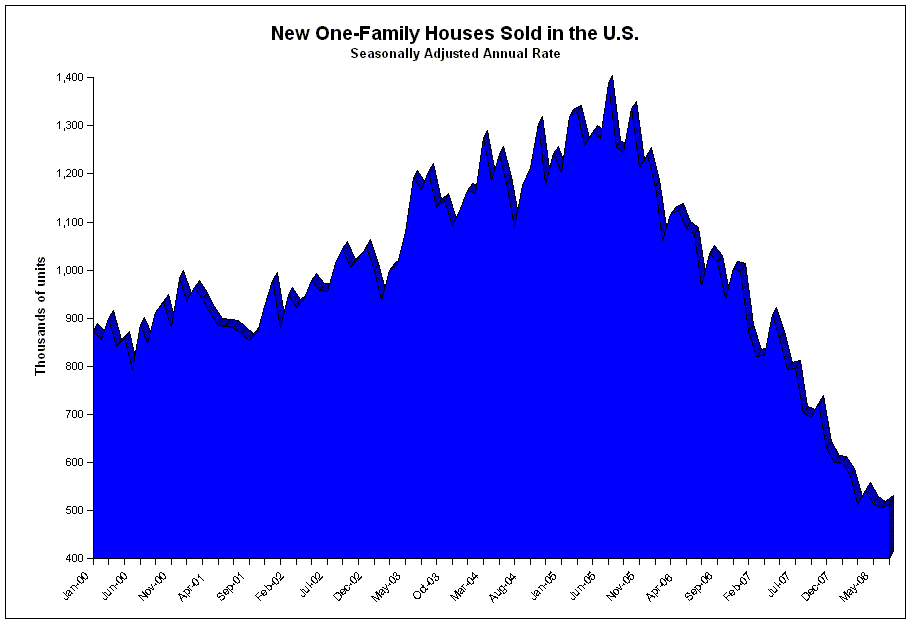
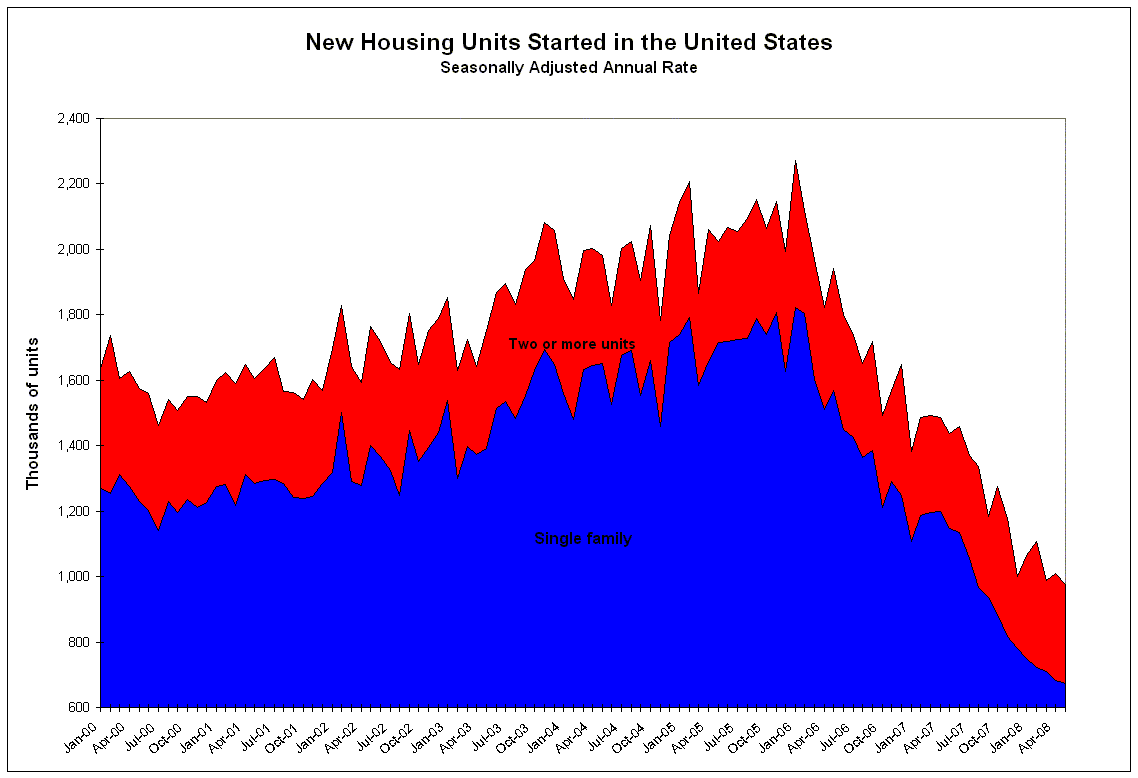
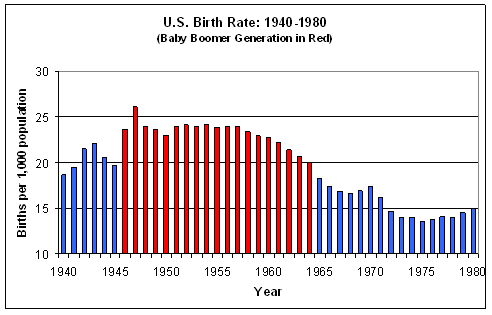
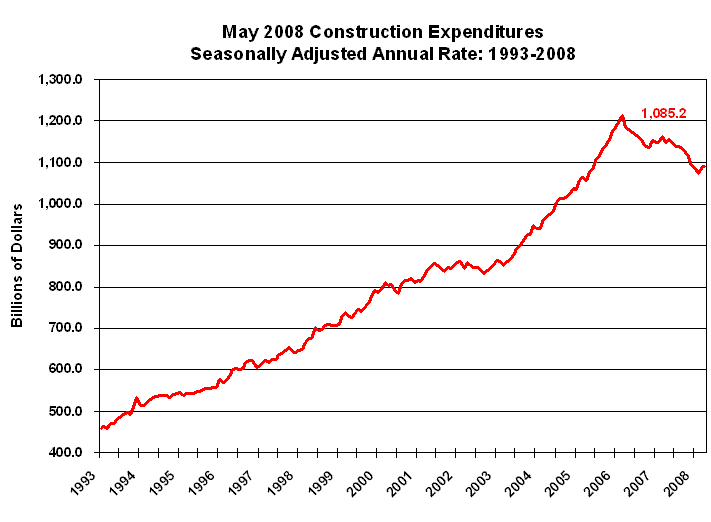
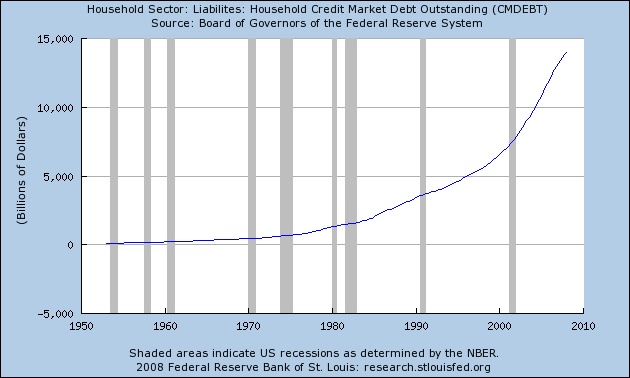
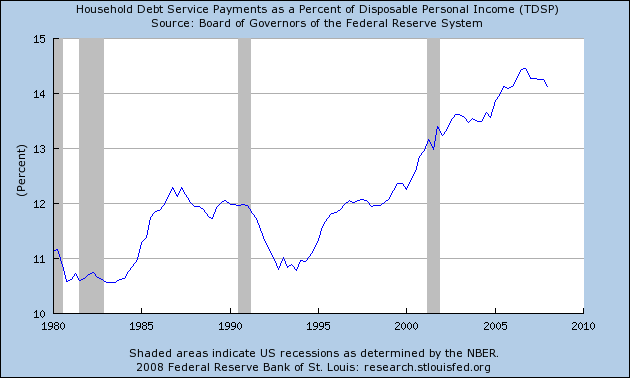
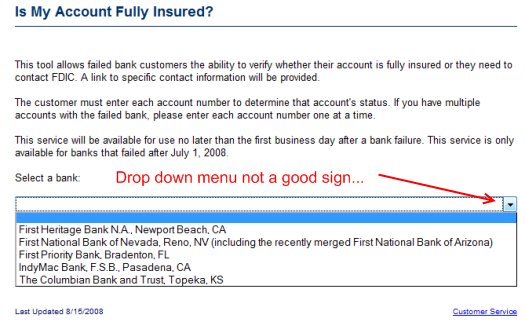
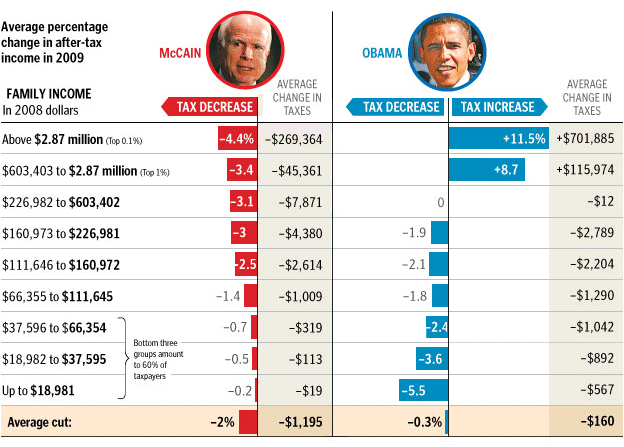
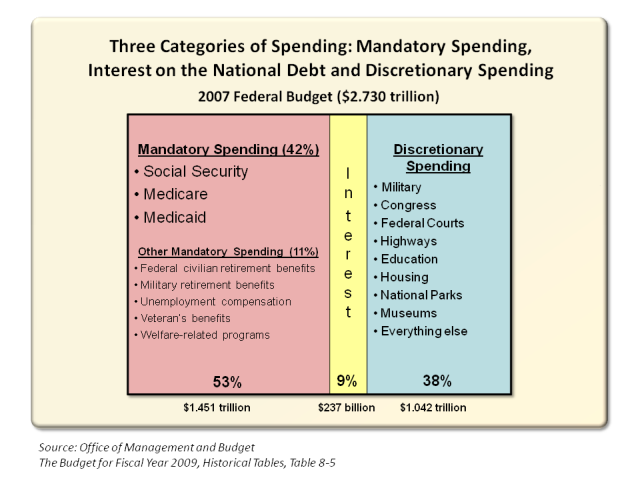
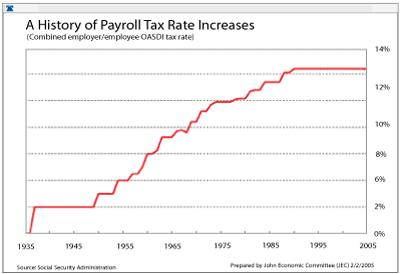
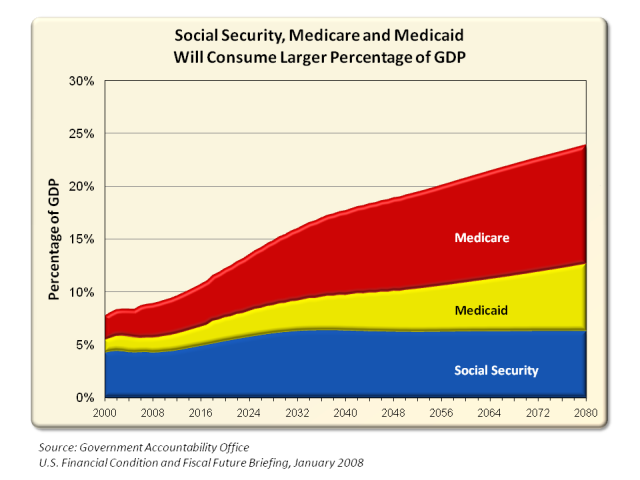
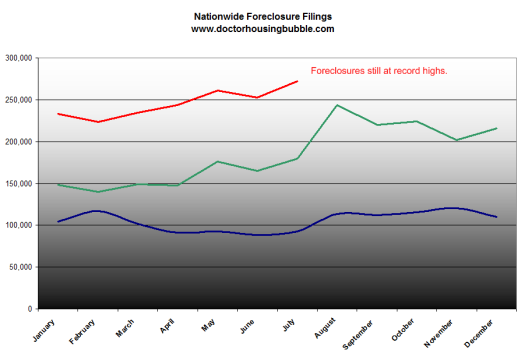
 Subscribe to feed
Subscribe to feed






40 Responses to “A Decade of Slow Growth: Why the United States will Face a Decade of Economic Stagnation and Face a L Shaped Recession. 10 Charts and Pictures as to Why This will Occur.”
Doc – great ! – but will you be on the election ballot in 2 months? As long as most Americans believe in Big Rock Candy Mountain, Santa Claus, The Tooth Fairy, Easter Bunny / or can’t even read these simple charts or understand the effects of compound interest this is a worthy, but hopeless cause. Instead of the Town Crier, you and a few others, I’m afraid will be reduced to chroniclers of the Decline and Fall of the American Empire, ala Edward Gibbon for Rome.
Any charts on proper way to display the flag, standing at attention during God Bless America at Yankee Stadium, prayer in the schools, flag lapel pins, guns, abortion, tying yellow ribbons around neighborhood trees to “support the troops” ? -all of the important issues for the next two months to the lemmings.
It remains to be seen how intelligent the average voter is. Let’s have hope! Hope that things will change for the better and that this recession won’t drag on and on and on. Hope that my little son can live in a better world than we have now.
Have a lovely labor day weekend everyone!
Two more incredibly, incredibly scary graphs. It looks like we might just be in the eye of the storm right now:
http://www.irvinehousingblog.com/wp-content/uploads/2007/04/adjustable-rate-mortgage-reset-schedule.jpg
http://thefloat.typepad.com/the_float/images/2007/10/22/2008_mortgage_resets_3.jpg
Do you think that by raising taxes on people who make more than $1.5M, which is only 146,000 people, that there will be any real increase in revenue? I seriously doubt it. Many of the 146K are not hedge fund managers, they are business owners. They have accountants who know where how to minimize their clients taxes.
In short, even though I tend to vote Republican, neither party has a plan to deal with the National Debt and yearly Budget Deficits. I have become convinced that no politician will deal with the issues until the pain is felt.
IF the politicians did come up with a plan, I would support raising my taxes. But I know they will never do it, and I will never see Social Security.
Excellent post. Sobering, yet I don’t think we’ll have to wait until 2011 to see the bottom. I think the bottom will be when homes fall 50% from their peak, to about 2002 prices. Homes have lost 30% of their value in just one year, so I do not think it’s unreasonable to expect another 20% drop in value in another year. The price drop from this year to the next will be at a slower pace, but that adds up to 50%, and that’s being conservative. If prices drop for another year or two beyond that, will we see 60-70% off peak prices? If the bottom is in 2011, then perhaps so.
(1) ” It was never crafted as a retirement or pension system yet many Americans now rely on Social Security as a primary source of their retirement income. ”
You are flat wrong. Social Security was created as a means of getting older workers out of the workforce. There was a rather large problem of huge numbers of unemployed people during the 1930s and not enough jobs. Before SS, except for the uppper 10%, people did NOT retire. They worked until (a) they died or (b) could not work any longer and then (i) their family supported them or (ii) they went into the poorhouse. People have never been able to retire throughout history until the creation of Social Security and pensions – or at least not ‘retire’ the way the US society thinks of it. Ergo to induce older workers to leave the workforce and open up jobs and reduce the competition for jobs, Social Security was created.
If the goal is to reduce the number of workers so younger workers cn advance, then either there is Social Security which spreads the burden of supporting the elderly across the entire younger generation or you personally get saddled with having your parnets, the in-laws and a few aunts and uncles depedningupon you for support. (And don’t say it can’t happen that you are supporting all those relatives. I remember collateral relatives who depended upon my grandparents for support.)
(2) “But how is that going to play out in the future for younger generations if they realize they won’t see any of that money and become a bigger and more powerful voting bloc? ”
Why not? SS is NOT a savings account where you put in money and get it back later. Each generation pays into it and supports the older generation. Those whining they will not “see” anything of what they put in will not “see” anything anymore of the exact dollar they put in than did prior generations. They will be dependent upon the generations following them to pay into the fund.
I was with you on most everything except comparing Obama to Mccain. You do realize that most people who make less than 60k don’t really pay anything in income tax. They get most of it back. So we need to give them more back when some of them don’t even pay anything at all?
“Flying off the shelves like the latest hit album” ?
You must be about my age. Nowadays, people download their music and there are no albums, just CD’s which are so eighties. Good post Doc.
Payroll tax does not = income tax, except its all the same if there is no “lock box”. Everybody pays up to $97,500, 12.5% employer/employee. First thing to do is to get rid of this as a separate deduction on the paycheck. I don’t see a separate deduction for the adventures in Iraq and Afghanistan and somehow they are coming up with the money.
enapa: right in spirit, wrong in numbers. That bar is closer to 30 grand. At 40-60 grand, the government comes knocking for approximately 15-20 thousand of it.
Though I’m on the cusp of “retirement,” whatever that means, share your concerns about Social Security and Medicare. Yes, here lately, “taxes” — especially in regard to raising them — is a dirty word. How else to pay for two wars with their enormous cost in both financial and human terms — both long and short term… How else to address the long-neglected energy issues? I think if we won’t be taxed, we will pay them in other, less straightforward ways that may have unpleasant consequences for our society. Could that be happening now with the financializing of all our necessities? Guess at some point we have to pay — those of us in the great middle class along with the wealthy.
Don’t forget that even if you make less than 60K a year, you must pay state income tax. That would wipeout any money returned on the federal level. I remember when my parents received the first stimulous checks a few years ago, they used it to pay a portion of there state taxes. So no money was used to go shopping for “plastic salad shooters” as James Howard Kunstler likes to say.
“You do realize that most people who make less than 60k don’t really pay anything in income tax. They get most of it back. So we need to give them more back when some of them don’t even pay anything at all?”
Don’t pay any taxes eh? But as math speaks louder than words.
Hypothetical person earning 50k in Los Angeles. No kids (can be married or single, doesn’t matter too much). No specialized deductions (not rich enough to afford a mortgage).
Marginal tax rates:
Social Security: 6.2%
Medicare: 1.45%
CA SDI: .8%
CA income taxes: 9.3%
Federal income taxes: 25%
So we have a marginal tax rate of 42.75%. But that’s only the marginal tax rate you say. Yes but SS, Medicare, SDI are paid on pretty much the whole income. The 9.3 CA tax bracket kicks in a bit above 42k, the 25% federal tax bracket kicks in a bit over 32k. So that’s a large percentage of your income on which your giving up nearly half to the government.
The clueless people who think people earning under 60k don’t pay much taxes are going to be scratching their heads wondering why Obama wins in a landslide, precisely because his program appeals to such people (and actually it appeals to a lot of people earning quite a bit higher incomes than that too, into the 6 figures, although McCain may carry the multimillionaires and billionaires).
“most people who make less than 60k don’t really pay anything in income tax”, huh? I want whatever that guy is smoking.
Talking about Ponzi schemes…
It’s really funny to see an advertisement for a Ponzi Scheme
right underneath your post Doc.
“The Rich Jerk” Advdertisement is a PONZI scheme.
How stupid can they be? You been talking about PONZI schemes
thru-out all of your posts and yet one of the idiots actually puts their
advertisement right underneath your post.
Ponzi schemes are popping up everywhere right now.
Usually promising huge compounded returns on your investment
only there is no investment. They keep it going by paying the first wave
of investors their returns with the money they receive from the 2nd and 3rd
wave of investors. Of course they skim off the top and transfer money into their own accounts. Once the 2nd and 3rd wave of investors have returns coming due and they no longer can bring in enough new investors to cover the returns the whole thing comes crashing down.
Everybody beware… if it sounds too good to be true – it usually is.
But what is happening right now is that a lot of people don’t trust their “regular” investments anymore because they are losing money like no tomorrow right now.
So alot of the 401K’s are being liquidated not because the money is needed to pay for bills, etc. but because we can see the balances dropping every day and we are afraid that it will dwindle down to nothing.
This opens the door to PONZI schemes because they promise such unusual and high returns, sometimes they even promise a compounded interest within a month and while on paper it looks great… you can usually kiss your money good bye for good because there is no real investment and the crooks just keep sending you false balance sheets and may even send you a return on your investments every now and then but your capital is gone… used to pay returns to previous investors and/or used to finance the lifestyle of the rich and famous.
The increase in PONZI schemes, Pyramid Schemes and
High Yield Investment Programs that I see lately has me worried.
When I saw one pop up here… I though it was time to warn everybody
on this site to investigate the mechanics of PONZI schemes on their own
so that they are prepared when they are being solicited to join one.
Hey Jon T., you think that guy is smok’en something because he claimed nobody with 60K in income pays much taxes, gotta tell ya J, the guy ain’t smoke’n anything, as an income tax preparer, doing a few hundred every year, the guy is right. Lots of refund checks. I hate the people that think tax cuts are the problem and then decide to vote for a guy like Obama. Tax cuts aren’t the problem, BIG GOVERNMENT IS. As long as we seek more tax revenue, the elitists won’t pay down any debt, they’ll expand government even more. So, we need someone that will cut government, not provide it more sugar.
Obama may not be a panacea but it is demonstrably true that it is in the economic interest of at least 82% of people to vote for him. Be smart people, vote your pocketbook. Race (or whatever you happen to call your reasons for hesitating) does not outweigh you and your family’s interests. The right wing has explicitly stated what they think of us time and again with comments like “nation of whiners” and “no one is uninsured because they can go to the ER.” Even if you make over 250k you should still vote against the right wingers on moral grounds. If you make less, then think about your family, put your doubts aside, and realize that you will continue to get ripped off if you vote R.
Hello! A tax refund doesn’t mean you aren’t paying taxes. It merely means that you’re paying a little bit less than was withheld.
Im just curious, what is the forecast for after 10 years?
A few articles ago Newport Coast and Corona del Mar came up. I’m pretty sure it was something like “will the bubble burst there?” According to Data Quick via OC Register Newport Coast (92657) median home price down 46.8% to $1,517,000. CDM (92625) down 22.2% to $1,750,000.
From Harry Dent we get Depression till 2024, then mild expansion out to 2060.
Are you people insane? “People making under 60k not paying taxes?” I pulled out my old tax records. Making under 60k my “effective tax rate” (that’s after refunds) was 16.68%. Once I crossed over 60k it actually went down to 16.19%
MikeT: You want to see a smaller government? Don’t vote republican. The current administration has doubled the deficit, squandered our surplus and increased government spending. They’ve also involved us in a costly war of choice, enabled corporations to continue outsourcing jobs, and made it legal to spy on everyone without a warrant. If you are not in the top .5% it really is not in your best interest to vote republican. It used to be a party that believed in smaller government, not legislating morality and fiscal responsibility. But if you look at their actions they don’t represent that anymore. They are cruising on a ‘brand’ that has lost it’s meaning and direction. The US needs a new party and a new direction. But that will not happen this time around. You want to support rich corporations outsourcing your jobs and evading taxes, the gilded heiress class who has never worked a day in their life to earn the wealth they inherited, vote republican.
And by the way, one year I got back all my taxes. I was going to school full time, working part time, and made less then 10k gross. Try living under the poverty line sometimes. It’s not what it’s cracked up to be.
re: taxes … discussing the IRS rate doesn’t tell the whole story. When it comes to all other taxes, everyone pays the same rate. No matter your income level, you pay the same for auto plates, retail sales tax, gas tax, property tax, permits, fees, utilities, cell phone taxes, insurance and so on.
Also, SS tax is only on roughly the 1st $100k. Those with higher incomes pay -0- SS tax on any income above that, yet draw the largest checks when they retire.
Your comments about the income distribution are incomplete. First, income is not wealth. Second, these people ALREADY pay most of the taxes. How much more exactly would the envy fille dpopulist demagogues ask these people to pay?
Man look at what this country has been thorugh and what it has been able with stand.
I think, this article is goign little out of reality. Dr.’s numbers look good as relates to Hosuing market, but seems very much out of reality as relates to other.
Bush started the mess by pulling us in to two wars. If he had left at one, then hen woudl have been hero today, now he looks like a fool.
McCain has to foolow his big brother steps, so he will for sure start a new war in Russia, if he comes to office.
Guess what – who is responsible for the recent conflict between Georgia and Russia??
Excellent summary of current conditions.
However, it appears some minor editing is due on the section below. According to my calculations, either the 40% down figure is wrong or the $31,800 or $63,600 (why two figures???) is wrong. Looks to me like it should either be 10-20% down or $127,200 down (at the 40% figure).
~~~~~~~~~~~~~~~~~~~~~~~~~~~~~~~~~~~~~~~~~~~~~~~~~~~~~~~~
“One reader sent me an article from Florida where in some heavily hit areas, lenders are requiring 40 percent down. In California where the median home price is $318,000, that means buyers would need to put down $31,800 or $63,600 plus closing costs.”
~~~~~~~~~~~~~~~~~~~~~~~~~~~~~~~~~~~~~~~~~~~~~~~~~~~~~~
Another interesting article on current conditions and probable deflation is at…
http://www.lifetoday.com.au/Documents/BOOM-BUST-ALERT-SEPTEMBER-2008.pdf
@Lifeguard:
Hedge fund managers don’t enter into discussions about income tax rates, actually. IIRC, their cut is considered capital gains and taxed at a flat 15%.
Doctor, Love your blog…one of the best on real estate and general economics that I read!
Now for my comments (on the comments)…
For one, I am surprised that the ‘tax preparer’ Mike T actually implied that people with income of less than 60k don’t pay taxes (he didn’t say that and I am sure he doesn’t believe that, but he implied it – like I implied that he is a ‘he’ but he could be a ‘she’!). Unless these people carry mortgages or have home business, it is highly unlikely that they will ‘not’ be paying taxes. Maybe Mike can give us some more data, like the good doctor, rather than make statements like that. I am sure smart people know that ‘refund’ does not equate to ‘no tax’ – it just means you overpaid.
As for Obama v/s McCain – I don’t really want to talk or read politics when I am reading this fine blog but an incident yesterday has encouraged me to help campaign for Obama. I was at Panera in Studio City, CA, waiting in line to order, when two friends who were meeting after a long time steered into a political conversation. Both were pretty passionate about their candidates and disagreed vehemently, until the McCain supporter in the end said ‘at least he is white!’ and ended the conversation and left. In Los Angeles (and California), where the white american population is less that 50%, I never really expected to hear such a statement. All the more reason, Obama’s victory will be bitter sweet. All this time I was sitting on the fence, a passive observer, but now I am definitely going to do my bit to help Obama win!
Don’t like to talk about race since it’s a very sensitive issue but I couldn’t help myself!
Great article Doc!
Just to add another data point which may extend out-in-time the housing recovery; very little is said about the inventory of “unoccupied dwellings”. These are units not on the market which are unoccupied for any reason. According to the US Census Bureau, there are 18 MILLION units! In housing boom years of selling 2 million units, that’s a nine year supply excluding what’s in the pipeline now and not including the 75 million boomers dumping their inventory. This is going to take a while!
Dr. Looks like you dot not publish commnets which you do not like.
Come one be a sport.
Put it in other words – would you rather have a $1,000 or so tax deduction OR a prospect of an employment or business opportunity to make $37,000 to $116,000?
Under Sen. Barack Obama’s plan (think of second Jimmy Carter administration) you won’t make $50,000 or $70,000 or $100,000 as before, but hey the BIG BENEVOLENT ALL KNOWING ALL CARING GOVERNMENT will give you $1,000 tax deduction. Whoa~~~ What a deal?!?!
enapa is not insane, just a little off. A single person making 60k will surely have to pay fed income tax, but a typical household (husband, wife, 2 kids) with 60k income will pay almost nothing in federal income tax. The math is as follows:
Standard deduction ( married, jointly) $ 10,300
Personal exemptions ($3,400 ea) $ 13,600
Child Tax Credit ($1000 per child) $ 20,000 (deduction equivalent for
$2000 tax credit)
So even without itemized deductions, a typical household making $44k or less will pay ABSOLUTELY NOTHING in fed income tax. If they make less than $40k, this family will qualify to get Earned Income Credit, making their effective tax rate NEGATIVE.
If this typical family can itemize deductions, and let’s say have itemized deductions of $26k (interest, property taxes, state income tax, charity, etc.) — guess what?? That bumps up their total deductions to $60k!
So enapa is not insane or smoking anything when he claims that most people making $60k don’t pay income tax. It’s quite common!!
Slow growth may not be a bad thing in the long run, though we’re all having a hard time figuring out how to react and adapt, and where the knives will fall. I mean, has recent growth Growth GROWTH really been so great? Aren’t we seeing what a bunch of addictive, dangerous, erosive spew a lot of that has been? Are we really all that much happier now than before things got this big, fast, and spendy?
Most importantly: isn’t it possible to live better on/with less? Question is how to get to that. Millions of people have already chosen that. It’s easier when done by choice.
But Doc, you’re spot on in this marvel of an essay, observing how people paid for stuff now with next decade’s income…without bothering to think of the time element of the equation. The lesson that needs to come out of all of this is the Buddhist Economics one–be here now, spend only what you have in your pockets (with a nice tithe to the less fortunate). Otherwise it’s Bart Simpsonland: “I’m going for the life of sin, followed by the presto-change-o deathbed repentance!”
I suppose we did the opposite. We took a 45 percent hit in household income to live in our current situation, at the turn of the millennium. We’ve got smaller earnings than at any time in the past 20 years…and have never lived better. Of course we don’t need a lot of the stuff others seem to. And our aspirations aren’t for More. Well, I’d like one more pet chicken, but that’ll happen in its time. I can tell you, it’s been satisfying to have people who ridiculed us mercilessly (many of them in the Bay Area) for our choices, now coming around to the same conclusions. Except that they’re stuck between Scylla and Charybdis. Or Pelion and Ossa. Or MasterCard and Visa. They’re choosing out of bitter necessity.
On the tax issue, if I recall correctly, the Bushismo plan was tweaked to give higher middle income earners and households a break on the theory they’d spend more money if they had it. It may not work out that way for all households. But no set of rules covers everyone. And as we all know, this is irrelevant anyway, because people paid for the booms and bubbles with debt, not earnings. And those of us who save rather than spend have always been saving rather than spending.
The nail-biter is the bank situation. Not to go all Idaho-bunker on y’all, but I’ve been expecting this meltdown since Reagan took office. In my own ways been preparing for it (skills, not guns; OK, a few guns). But I always knew there’d come a moment when something happened, and my little inner voice would go, “Scheisse. This is It.”
When FDIC announced it would be tin-cupping the T, it was that moment.
rose
60k for 4 people? That’s 15k per person. Isn’t that bellow poverty level? No thanks, I don’t think it’s necessary to squeeze taxes out of them. Trust me, I’ve been there. It was when I sold plasma to buy groceries, and I was mostly eating ramen soup and baked beans.
Vacancies?
‘est. 2m vacant dwelling units’ us 07 (two million).
see news: some un doc workers in states bought big houses!
Job growth never really recovered from the 2001 recession. Remember that as our population grows constantly, we need roughly 1.8 million new jobs per year to keep pace. How have we performed? check out my associatedcontent post:
http://www.associatedcontent.com/article/1300166/modern_society_threatens_the_american.html?cat=9
Just a short note:
People born in 1960 should not be considered baby boomers.
If you joined the military in 1978 (at 18), you did not qualify for the GI Bill (free college). It was cut off in 1977. I think this is a very important factor.
Leave a Reply